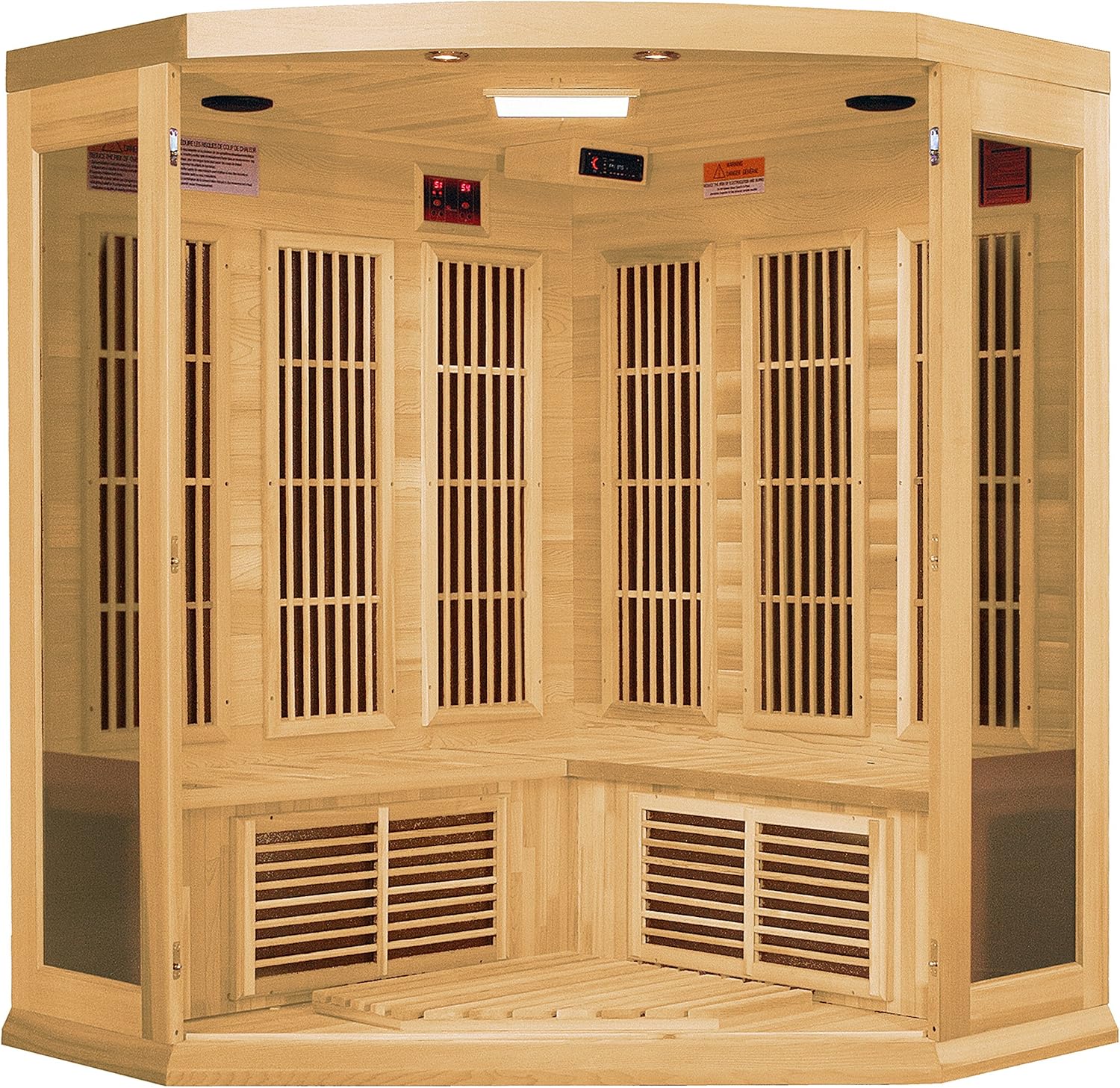Recovering from surgery is never easy—whether it was a planned procedure or an emergency. After you’re done with the hospitals, stitches, and everything that comes along with surgery, the real work begins: recovery. One option that might make your healing journey more pleasant and effective is sauna therapy.
In this article, I’ll guide you through why and how sauna therapy can be a great tool for your post-surgery recovery, giving you some tips on products you might find helpful to get started.
Understanding Sauna Therapy
So, what exactly is sauna therapy, and why should you care about it in the context of post-surgery recovery? Sauna therapy typically involves spending time in a room heated between 150-195°F (65-90°C), using either dry heat (like traditional Finnish saunas) or a more humid setting (like steam rooms). There are also infrared saunas, which use radiant heat to penetrate deep into your tissues.
Sauna therapy can promote various health benefits such as increasing blood flow, reducing pain, relieving muscle stiffness, and ultimately aiding in faster healing. These are all crucial when you’re on the mend after surgery. You can’t exactly jump into high-intensity activities to get the blood flowing, but a sauna can gently provide that benefit. It’s an ideal low-impact solution that you might want to consider.
Let’s get into how sauna therapy can specifically benefit you in the weeks and months after surgery.
Benefits of Sauna Therapy After Surgery
Increased Circulation to Promote Healing
One of the greatest benefits of sauna therapy is increased blood circulation. Heat causes your blood vessels to expand, which means more oxygen-rich blood can get to your surgical site and other areas that need healing. This increased blood flow can help reduce inflammation, improve tissue healing, and promote the growth of new, healthy cells.
Imagine this: Instead of trying to find an intense cardio exercise that is safe to do during recovery, sauna therapy helps create a similar boost in circulation without the physical exertion. You’re able to get a similar effect while sitting comfortably—making it perfect during that fragile post-surgery phase.
Pain Reduction and Muscle Relaxation
Another major benefit is pain relief. After surgery, the affected area is often sore, tight, or stiff. Sitting in a sauna encourages your muscles to relax, while the heat helps to release natural endorphins—your body’s natural painkillers. Infrared saunas, in particular, can deeply penetrate tissues, providing pain relief even in deep muscles and joints. This can be especially useful if your surgery involved your back, joints, or other musculoskeletal areas.
Detoxification and Immune Support
Post-surgery, your body may still be processing anesthesia and painkillers, and you might have a lot of inflammation. Sweating in a sauna can help eliminate toxins and reduce this inflammation. While sweating is often associated with exercise, you can get the same detoxifying benefit through sauna use.
Plus, when your lymphatic system is stimulated through sauna therapy, it can help your body fight off infection—an important consideration after surgery.
You could supplement your recovery by using a good detox tea like the Yogi Detox Tea to enhance the detoxification benefits. Many people on Amazon rave about this product’s natural ingredients and overall effectiveness.
Mental Relaxation and Stress Reduction
The post-surgery period can be mentally challenging. It’s not just about physical healing; dealing with limitations, discomfort, and general fatigue can be quite stressful. Sauna sessions are known to have a calming effect, thanks to increased endorphins and overall relaxation. Just spending 15-20 minutes a day in the sauna could help alleviate anxiety and improve your mood.
Improved Sleep Quality
Adequate sleep is vital for healing, and if you’re having trouble sleeping, sauna therapy may help you. The rise in body temperature during a sauna session followed by the natural cool-down afterward can make you feel sleepy and encourage a more restful night’s sleep.
When to Start Sauna Therapy
The most important thing to remember when considering sauna therapy after surgery is timing. Not all surgeries are the same, and not all recovery periods are equal.
You should always consult with your doctor before beginning sauna therapy. Typically, it’s best to wait until your incisions are healed, which could be anywhere from 3 to 6 weeks post-op, depending on the type of surgery you’ve had.
Jumping in too early could risk infection, irritation, or other complications.
Once your healthcare provider gives you the green light, you’ll be in a position to safely reap the benefits of sauna therapy.
How to Get Started with Sauna Therapy
Traditional, Infrared, or Portable Sauna?
You’ve got options. Traditional saunas use hot rocks or wood-burning stoves to heat the air, while infrared saunas use light to heat your body directly.
Infrared saunas are popular for recovery purposes, as the heat penetrates deeper and the temperature can be lower, making it easier to tolerate if you’re not feeling 100%.
If you don’t have access to a sauna facility near you, a portable infrared sauna might be a perfect alternative. Products like the SereneLife Portable Infrared Sauna are well-rated, easy to set up, and can be used in the comfort of your own home. It’s a great option if you’re looking for affordability and convenience.
Start Slow and Listen to Your Body
Your body has been through a lot, and the goal is to help—not overwhelm—your healing process. Start with shorter sessions of about 10-15 minutes, two to three times per week. Gradually increase the duration to 20-30 minutes as you begin to feel comfortable. Be cautious, though—if you start to feel dizzy, nauseous, or overheated, exit the sauna and rest.
Moisturize and Care for Your Skin
After spending time in a sauna, your skin might feel dry, especially if you’re sweating a lot. Using a good quality moisturizer will help keep your skin from drying out.
Precautions to Consider
- Hydration is Key: Sauna use can lead to excessive sweating, and it’s crucial to stay hydrated before, during, and after your session.
- Listen to Your Body: If at any point you feel lightheaded, nauseous, or weak, leave the sauna immediately and cool down. Your body is already working hard to heal—you don’t want to add unnecessary strain.
- Not Suitable for Everyone: If you have specific medical conditions like cardiovascular disease or are on certain medications, sauna use may not be ideal for you. Your healthcare provider will be the best person to make that call.
Combining Sauna Therapy with Other Recovery Techniques
To make your recovery as smooth as possible, you can combine sauna therapy with other methods like gentle stretching, using foam rollers, drinking herbal teas, and taking supplements.
For stretching, a yoga mat like the Gaiam Essentials Thick Yoga Mat can be helpful as it provides extra support for any floor-based exercises you decide to do to keep your body loose and improve your range of motion.
Stretching post-sauna, when your muscles are warmed up, is easier and more effective—and it can help you avoid post-surgery stiffness.
Closing Thoughts on Sauna Therapy for Post-Surgery Recovery
Recovery is a journey, and the more tools you have to make that journey a smooth one, the better. Sauna therapy could be the key to reducing your pain, increasing your mobility, and promoting overall healing during a tough period.
Always remember to consult with your healthcare provider before starting sauna therapy, and take it slow as you listen to your body’s needs.
With patience, care, and a bit of heat, you might just find yourself feeling stronger and better—one sauna session at a time.
Written by:

